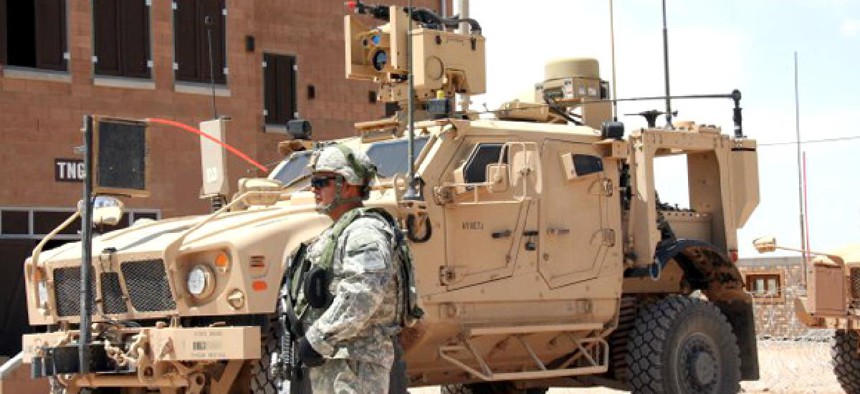Pentagon approves limited fielding of broadband network gear

U.S. Army
Terrestrial communications problem remain to be fixed.
The Army has won Pentagon approval for limited production and fielding of a long-range broadband tactical communications system, which will help equip brigades from the 10th Mountain Division slated for deployment to Afghanistan in 2013.
The Army said yesterday the Defense Acquisition Board on Sept. 25 cleared production of the Warrior Information Network-Tactical, Increment 2, built by General Dynamics C4 Systems, which provides broadband communications capabilities via satellite or terrestrial signals for infantry companies, brigades and divisions.
Col. Ed Swanson, project manager for WIN-T, said the system “provides an unprecedented on-the-move capability that the Army does not have today and builds upon capabilities that are already fielded and operationally proven.”
The production decision covers eight sets of WIN-T gear, with the initial two sets planned for fielding to the 10th Mountain Division this month. The equipment includes small Ka-band satellite dishes, intended for installation on mine resistant-ambush protected vehicles.
The Army said it will continue to work with the Office of the Secretary of Defense and the test community to aggressively address problems with the system identified during the initial operational test and evaluation held in May as part of the Army's Network Integration Evaluation at White Sands Missile Range, N.M.
Paul Mehney, a spokesman for the Army’s System of Systems Integration Directorate, said WIN-T, Increment 2 still faces what he called “challenges” with highband networking waveform for terrestrial communications, a 30-meter tall mast used to extend range; and the soldier network extension, which is intended to provide network connections to company commanders.
Many of the problems identified in the May tests are fixable through training, policy or procedural revisions and the Army has verified corrective actions through developmental testing, Mehney said. The Defense Acquisition Board directed the Army to limit acceptance of WIN-T, Increment 2 gear until deficiencies are corrected.
Army Chief of Staff Gen. Raymond T. "Ray" Odierno has said beefing up tactical networks is the Army’s No. 1 modernization priority. The service plans to spend $6.1 billion on WIN-T through 2018. It also plans to spend $7.5 billion on handheld and manpack Joint Tactical Radio System radios from General Dynamics through 2023, the other key component of its tactical network modernization strategy.
J. Michael Gilmore, director of operational test and evaluation for the Defense Department, deemed the JTRS manpack operationally ineffective and unsuitable based on tests at White Sands this spring.
Chris Marzilli, president of General Dynamic’s C4 system told Nextgov last week that configuration issues and the noisy radio environment at White Sands skewed the results of the manpack tests.
The Army is testing the manpack at the Electronic Proving Ground at Fort Huachuca, Ariz., and Mehney said problems encountered at White Sands are being addressed in the tests, which will help guide the Defense Acquisition Board on deciding whether to approve low-rate production of the manpack this month.



